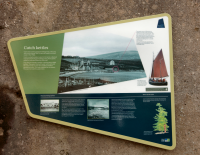

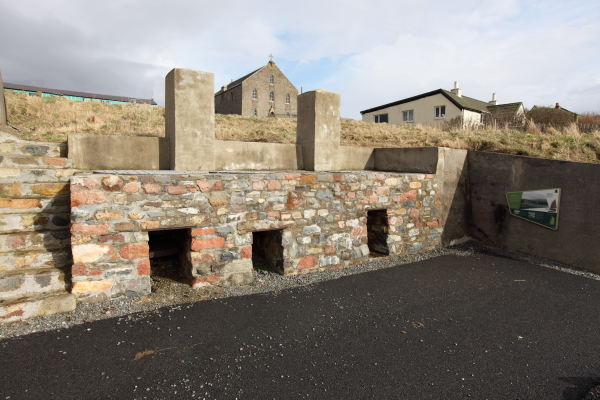
The completed Cootch Kettles at Hillswick, Shetland.
The site is open to the public next to the sea shore at Hillswick, to the left of the Community Shop

Before any work could commence on the Cootch kettles, rock armouring had to be in place to protect the kettles and an old wall from the encroaching sea, this was provided under Shetland Island Council's coastal protection programme.
The main works included the removal of the only surviving kettle without damage as it was found to be of an unusual size, being much bigger than most other known kettles. Fire bars under the kettles were specially fabricated to show the differing types once used in the original construction.
Undamaged original stone was recovered and cleaned for reuse and a lime plaster was used for historical accuracy when rebuilding the stonework. Extra stones of a similar appearance were required to finish the project and yet again the community kindly came to the rescue donating stone from old buildings.
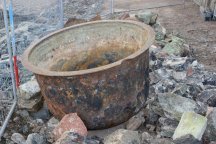
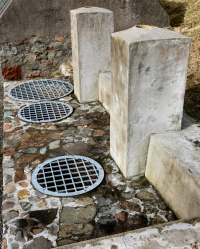

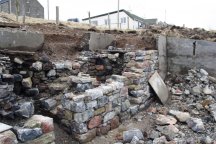
This was the first major project undertaken by HEARD. Cootch kettles were in use here during Hillswick's heydays when it was an important fishing and trading centre at the beginning of the last centuary. Fishing lines and nets were treated in the kettles using Cootch to prolong their use, but over the years the kettles had been damaged and the structure had become little more than a heap of stones with the sea threatening to wash away what little was left.
The photo below left shows the very poor condition of the structure at the start of the project with the photo below centre showing the only recovered kettle.
The two kettles needed to complete the restoration were generously donated by members of the local community.
The picture below right shows reconstruction work underway.
HEARD would like to thank Dr Carol Christiansen, Shetland Amenity Trust's archaeologist who kindly helped HEARD throughout this project and ensured that historical accuracy was retained during the design and construction phases.
Funding for the main project was from Shetland Island Council's Infrastructure Services and partly financed by fund-raising organised by HEARD and everyone is sincerely thanked for their contributions both is cash and materials.
Reconstruction of the Cootch kettles was carried out by Alan Smiles and his team from Shetland Stonecraft. Safety covers were fabricated and fitted by Clive Mouat. Road repairs by M. K. Leslie. Shetland Amenity Trust supplied and fitted the interperative sign.
HEARD would like to express gratitude to everybody who has helped in any way to improve Hillswick's waterfront by donating the replacement kettles, extra stone, advice and sweat - safeguarding a bit more of this areas history.